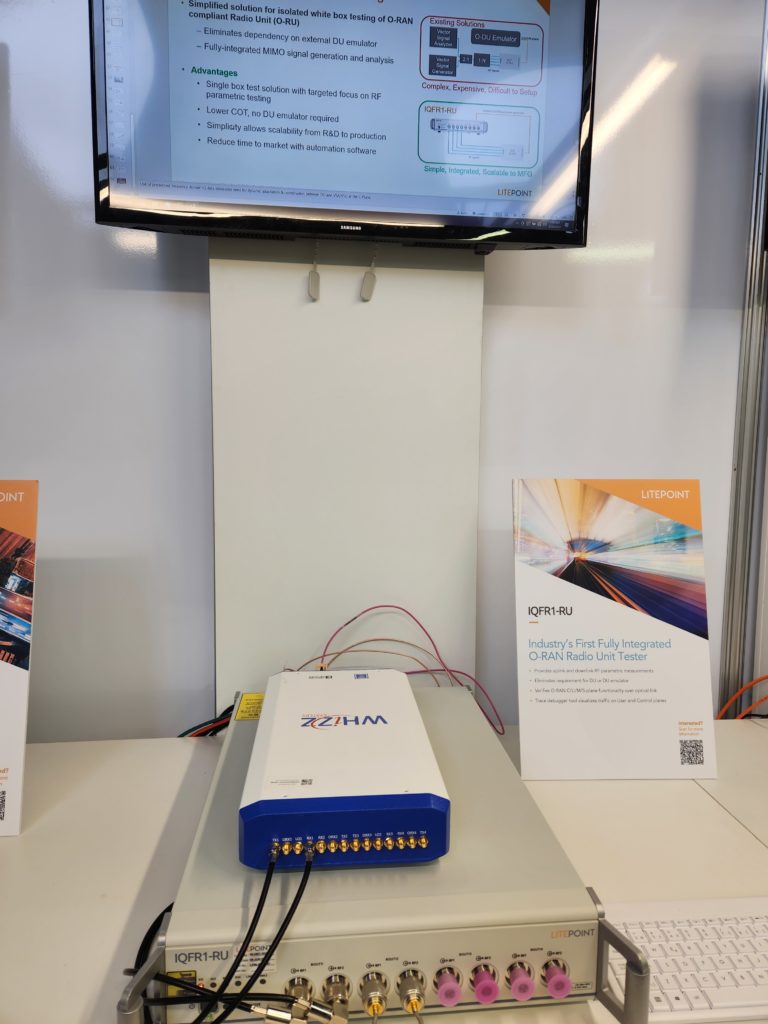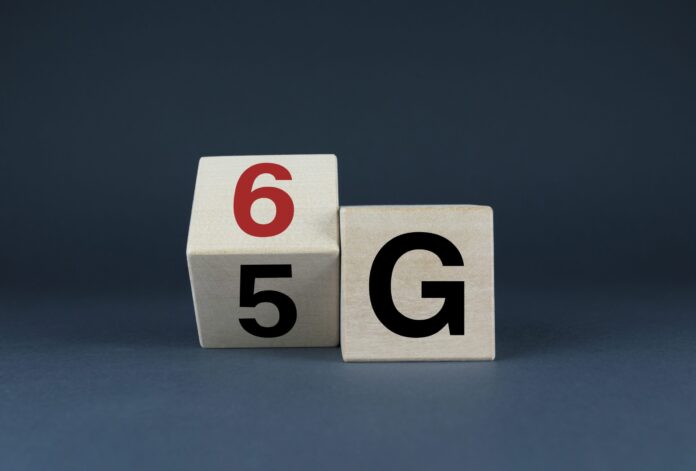LitePoint’s Adam Smith on observations of trends at MWC
While anticipation for the shiny new 5G tech on the block was the driving theme for the previous several years of Mobile World Congress Barcelona shows, this year there was a shift, arguably one with two facets. One, a very practical focus on how to monetize the 5G networks that are here and very real; and two, the shiny new tech being hyped is now 5G-Advanced and future 6G systems.
“In general, the theme was, Wave One of 5G is done,” said Adam Smith, director of marketing for test company LitePoint. “What I found interesting is what people were talking about for Wave Two,” or 5G-Advanced.
Part of that discussion revolves around spectrum. Smith said that LitePoint has been paying close attention to discussions around when millimeter wave will be deployed in a significant way, and the discussions around 5G’s continued evolution are calling for two gigahertz of spectrum being needed for 5G Advanced deployment, between now and 2030, in order to meet capacity needs. “The only place to find two gigahertz of spectrum is to go to millimeter wave,” he pointed out. “Midband spectrum is going to get, theoretically, chewed up pretty quickly in the next two to three years and so logically, that would imply that mmWave is expected to turn on. But we’ll see.”
As a result, there is talk around the ability to use Frequency Range 3. FR 1 is sub-6 GHz, FR 2 is mmWave, and FR 3 is the stretch of slightly higher spectrum between 7-24 GHz that is already being talked about for future use in 6G, Smith noted; he expects that there will be quite a bit of focus on this spectrum range at the upcoming World Radio Conference 2023.
“The problem with the 7-24 GHz range is that it’s actually fairly well occupied today,” he explained. “So moving those incumbents is just going to take years.” By his estimate, 5-10 years, which would put it into use in the 6G era.
“The challenge with predicting 5G is, there’s just so many directions it can go, because of the flexibility,” Smith said. One of the biggest variables when it comes to spectrum and capacity? Fixed Wireless Access. “If it takes off in a major way, it’s just going to kill midband spectrum,” Smith says. “There’s just no way midband has enough bandwidth to carry all the FWA traffic, so mmWave would make a lot of sense for FWA, if there’s a real business model there.”
On the upside for current spectrum allocations, though, Smith also expects midband spectrum deployments to get efficiency upgrades to squeeze more capacity from them. “I think it’s unrealistic to think of the midband spectrum as just a once-and-done thing,” he said. “I think people are going to get more creative on more efficient ways of using it.” Those include Open RAN and increasingly small cells. “Smaller cells in general are going to have to happen, because you can’t just spend a hundred billion dollars on midband spectrum and say ‘oops, it’s gone, let’s just go somewhere else’. … We need to get a little bit more recyclable on our spectrum, and I think smaller cell sizes is a very logical thing.”

Speaking of Open RAN, Smith says that LitePoint’s demonstrations related to O-RAN garnered the most attention. But in his view, Open RAN is at the peak of its hype cycle. “The distance from between here and mainstream deployment … ” he pauses. “I think we all get a little ahead of ourselves sometimes, and reality is going to be what reality is going to be,” Smith offers, adding the caveat that “Almost every technology evolves like this.”
And there is also another technology transition going on in Wi-Fi, with Smith predicting a “long and deep transition” to Wi-Fi 7, which he says offers a “much more deployable network versus previous generations.”
“The good and the bad with Wi-Fi is that it carries forward the baggage,” Smith continues. “But deploying a new type of network requires a more creative deployment model, and Wi-Fi 7 solves some of the things that Wi-Fi6 ‘broke’, if you will. So I think we’re going to see a long replacement cycle with Wi-Fi 7.” He went on to add that LitePoint is seeing enterprise network upgrades at a “pretty active level,” driven by return-to-office pushes that are greater than during the worst of the pandemic years.
In general, Smith said, the telecom show that sets the tone for the year “felt like an inflection point, where people said, ‘Let’s put a bow on Wave 1 of 5G and let’s look to the future,’ whereas the last several years have been more around, okay, ‘5G is still this new thing,'” he said. “Now it was like, well, 5G is here now, what does the future of 5G look like? And let’s start looking toward 6G.” But he also points out that the reality is, “We’re still kind of just scratching the surface of 5G. If you look at the vision of 5G, we’ve really just done mobile broadband. We haven’t done any of the ultra-reliable, low-latency stuff. Surgeons aren’t operating on people on the other side of the planet. We really just found a nicer mobile connection.” How, and how soon, those other features come to life—and provide revenues beyond consumer smartphone upgrades—remains to be seen.

